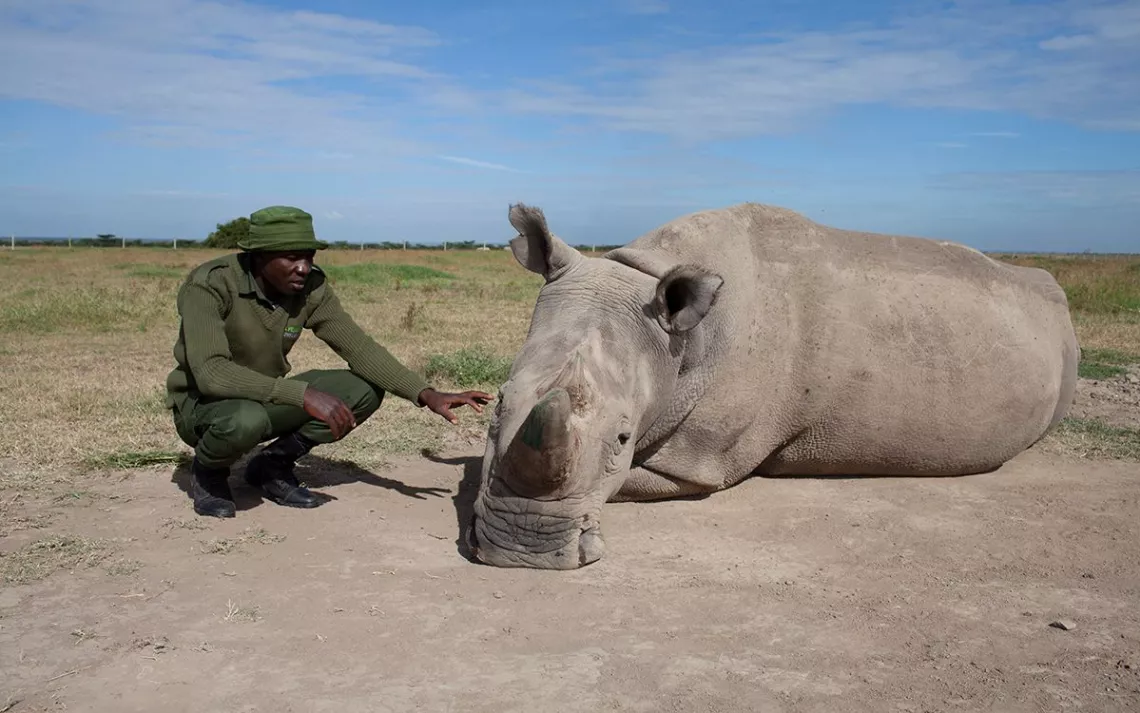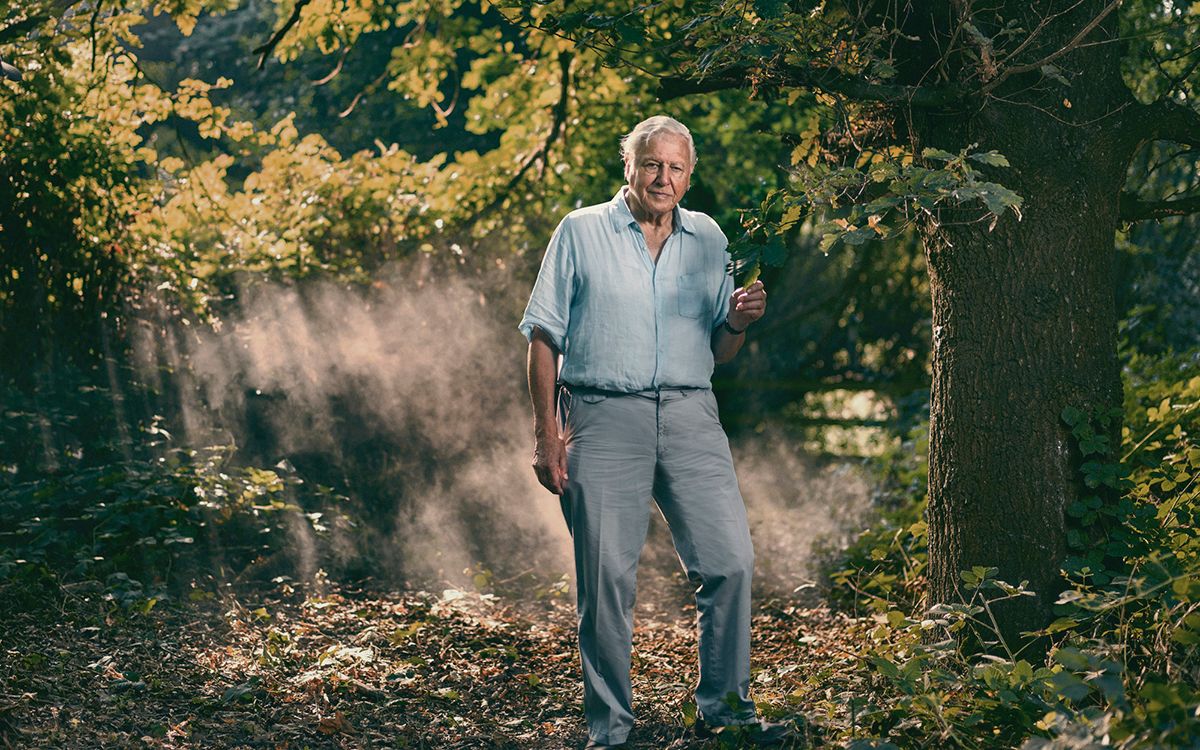Sir Attenborough’s “Extinction: The Facts” Shows How Things Got So Bad
Fortunately, the famous naturalist’s latest documentary offers solutions too

James Mwenda and one of two remaining northern white rhinos in Kenya | Photo Courtesy of Charlotte Lathane
Monkeys leaping from trees to escape a forest fire; a beached orca whose local population has been rendered sterile because of polluted oceans; and pangolins, a gentile armadillo-like species, bagged like produce because of dubious medical claims about their scales. These are scenes from David Attenborough’s latest documentary, Extinction: The Facts. Known for feel-good nature films, Attenborough has pivoted in his recent work (including Life on Our Planet, which Sierra reviewed in October) to an urgent call to action. His latest film walks viewers through the rise of the extinction crisis, a human-caused event leading to biodiversity loss around the world.
You won't see epic migrations and breathtaking wilderness in Extinction: The Facts. Instead, the documentary, which first premiered in the UK, is like a film version of the UN report on biodiversity loss. Viewers learn that 1 million species face extinction, the insect apocalypse threatens global food production, and climate change and pollution are accelerating these threats.
Sadly, we know these overlapping crises are taking place but are doing too little to stop them. This feeling becomes all too real as we watch scenes of trawlers, large enough to fit four jumbo jets, overfishing a small patch of ocean. The visuals lay bare the destruction in a way that mere data never could. The purpose of these stories is to shock and alarm us, not because these narratives need exciting new twists, but because the time to act is running out.
"Over the course of my life, I've encountered some of the world's most remarkable species of animals,” Attenborough remarks early in the film. “Many of these wonders seem set to disappear forever."
Interspersed between the distressing images, a cadre of scientists provide startling statistics. Thirty percent of the earth’s soil is degraded; 75 percent of the earth’s surface not covered by ice has been altered by human development; and, according to Sir Robert Watson, chair of the Intergovernmental Science-Policy Platform on Biodiversity and Ecosystem Service, 90 percent of the earth’s wetlands, a key carbon sink, have been converted for agricultural purposes.
While habitat loss, the biggest driver of extinction, is featured prominently in the film, the main stars are the creatures themselves. For example, the film introduces us to Najin and Fatu, the last two northern white rhinos. Their species has been poached to oblivion because of the perceived value of their horn, which is made of keratin, the same material as your fingernails. The documentary also touches on COVID-19, with Peter Daszak, a British zoologist, explaining how our continued push into wildlife habitat increases the likelihood of novel diseases and infections.
If this all sounds too depressing, try not to despair. True, this is not the relaxing nature documentary of yore, but Extinction isn't all doom and gloom. The latter half is dedicated to solutions for averting the extinction crisis. We can reduce food waste to cut the need for agricultural land, Sir Watson explains. We can curb our use of pesticides and regulate fishing. Some of the biggest steps we can take, according to Professor Lord Nicholas Stern from the London School of Economics, include changing the way we produce and consume, for example, reducing pollution in factories, restoring degraded land, retrofitting buildings, and making our cities cleaner.

Sir David Attenborough at Holly Lodge in Richmond Park, London. | Photo courtesy of Sam Barker
Slivers of optimism like this have become a common but necessary trope in films like this one, which aim to introduce the viewer to complex, difficult issues without leaving them feeling hopeless. And this film does a fine job of that. One of the main takeaways? This does not have to be our destiny.
At the end of the film, we see earlier footage of a young-ish David Attenborough meeting Poppy, a critically endangered baby mountain gorilla in east Africa. At the time of his visit, mountain gorillas were in steep decline due to habitat destruction and intensifying agriculture. Shortly after, we meet Anna Behm Masozera, a scientist currently working with the same troop of gorillas. Masozera happily reports that the species is now recovering and that baby Poppy had many offspring. This success stems from efforts by government officials and conservation groups to connect forest tourism with local communities. A portion of the tourist revenue from the parks goes to nearby residents, easing the demand for agriculture. The story illustrates a remarkable tale of coexistence even in densely populated, conflict-stricken areas.
In the last scene, speaking directly into the camera from London’s Richmond Park, Attenborough leaves us with a heartening message:
"I do truly believe that, together, we can create a better future. I might not be here to see it, but if we make the right decisions at this critical moment, we can safeguard our planet's ecosystems, its extraordinary biodiversity, and all its inhabitants. What happens next is up to every one of us."
Extinction: The Facts makes its US debut on local PBS stations on March 31, 2021 (check your local listings at www.pbs.org for details) and is also available for streaming.
 The Magazine of The Sierra Club
The Magazine of The Sierra Club



